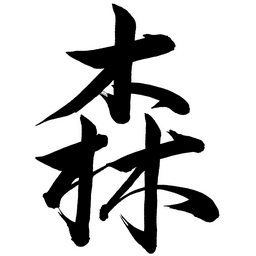| Articles | |
| JeongSoo Shin | From Paradise to Garden: The Construction of Penglai and Xuanpu |
| Shih-Shan Susan Huang | Daoist Imagery of Body and Cosmos, Part 2: Body Worms and Internal Alchemy |
| Stephen Jackowicz | Daoist Incantations for Acupuncture |
| M. Cristina Zaccarini | Daoist-inspired Healing in Daily Life: Lü Dongbin and the |
| Georges Favraud | A Daoist Career in Modern China: Wang Xin’an of the Southern Peak |
| Forum | |
| Mary Bockover | Daoism, Ethics, and Faith: The Invisible Goodness of Life |
| Bill Hulet | Daoism in the West: Following Buddhist and Christian Models? |
| Imke Bock-Möbius | Daoism and Entirety in Quantum Physics |
| Mary Kay Ryan | Infusing Chinese Medicine with Spirit: Daoism, Shamanism, and Chinese Medicine in the Modern World |
| Rita Egizii | Daoism as a Solution for Sustainable Business |
| Suzanne Cahill | What to Fear and How to Protect Yourself: Daoism and Hong Kong |
Jeongsoo Shin – From Paradise to Garden: The Construction of Penglai and Xuanpu
This paper examines two lines of development from paradise to garden in ancient and medieval China. It problematizes contrasting differences of Penglai (Immortals’ Isles) and Xuanpu (Hanging Garden) by analyzing a selection of mythological, historical, and literary texts. It concludes that they were founded on the two different kinds of Daoist desires, secular and transcendental.Penglai and other islands developed into a formula of three islands in one pond beginning in the Qin-Han epoch (221 B.C.E.-220 C.E.). They then came to play an integral role in imperial garden culture both in China and neighboring countries. Emperors saw the active incorporation of otherworldly island paradises as an effective way to enhance prestige or substitute their desire for eternal life. In contrast, the Hanging Garden was created for the crown prince mainly during the Northern and Southern Dynasties. Prince Zhaoming (501-531) transformed it from a pleasure garden into a natural park in concert with aristocratic eremitism.
Shih-Shan Susan Huang – Daoist Imagery of Body and Cosmos, Part 2: Body Worms and Internal Alchemy
This article presents Daoist visual representations of body and cosmos, drawing extensively on illustrations and diagrams from texts preserved in the Ming-dynasty Daoist Canon. To examine how the Daoist perception of body and cosmos unfolded over time, I discuss images of four types: body gods, imaginary journeys to stars, body souls/worms, and the body transformed in internal alchemy—the first two in JDS 3 (2010), the next two here. The current work hopes to contribute to interdisciplinary studies of Chinese art, religion, and science. From the visual perspective, it hopes to add to the on-going examination of charts or maps (tu) and to enrich our understanding of the representation and perception of what “body” means in Chinese visual culture. In terms of Daoist studies, my dominantly visual approach aims to complement the many textual approaches on this topic. This study also adds to the growing scholarship of Daoist art, which has so far focused more on public devotional paintings and statuary and less on private imagery associated with meditation and visualization.
Stephen Jackowicz – Daoist Incantations for Acupuncture
This paper examines the use of Daoist incantations in conjunction with acupuncture as described in the Zhenjiu dacheng (Great Compendium of Acupuncture and Moxibustion) from the late Ming Dynasty. Utilizing primary source material, the paper traces the background of Daoist incantations in the period in relationship to the cotemporaneous techniques of acupuncture. The combination of these techniques is explored in the literature. The author then presents the results of a case study utilizing the combined incantation-acupuncture technique comparing the efficacy of the combined methodology versus the use of needle technique alone.
M. Cristina Zaccarini – Daoist-inspired Healing in Daily Life: Lü Dongbin and the Multifaceted Roles of Chinese Barbers
This paper examines the role of Chinese barbers in the 19th and 20th centuries, utilizing recent Daoist scholarship together with the contemporaneous observations of Western physicians and travelers. The study’s impetus emerges from Dr. John Dudgeon’s depictions of Chinese health practices as rooted in Daoism as well as connected to the healing role of barbers. Other Western observers who did not share Dr. Dudgeon’s positive opinions and were critical of Chinese hygiene yet also contribute information on the important role of barbers. The paper further examines the barber’s role in light of Paul Katz’s descriptions of popular interpretations of the immortal Lü Dongbin. As the patron deity of barbers he is represented as one who touches the lives of the poor and heals the sick. Western observers describe Chinese barbers as providing both haircuts and health services to promote circulation through the stimulation of energy (qi) flow. Thus they made affordable health care available to locals who often did not have access to Western medicine.
Georges Favraud – A Daoist Career in Modern China: Wang Xin’an of the Southern Peak
Alive for most of the twentieth century, Wang Xin’an (1918-1993) lived through the deep and violent social changes from which emerged the Chinese nation-state, technology, and modern economy. In the 1930s, the he had been healed of his weak health and initiated in a monastic community by a master of the Quanzhen (Complete Perfection) school. Then he became a master of Daoist liturgy, practicing both personal ritual techniques of internal alchemy and healing as well as the collective recitation of scriptures and offerings to the celestial hierarchy. Master Wang accomplished virtuous achievements and established his meritorious existence and identity. After 1949 he moved to Hunan province and became a leading official representative of the Daoist community of the Southern Peak. As the new state endowed Daoism with a national administrative hierarchy and a globalized leisure class and tourism industry developed, the Southern Peak was reinvented as a site of natural, cultural, and spiritual heritage. Master Wang dedicated his life in this changing milieu to build official Daoism in Hunan.
